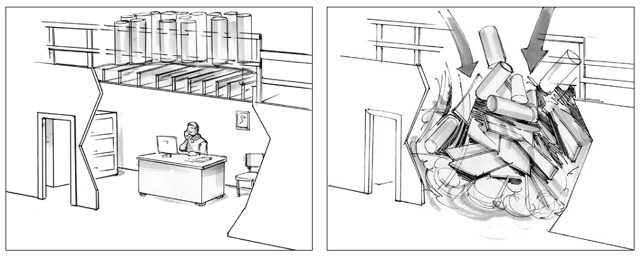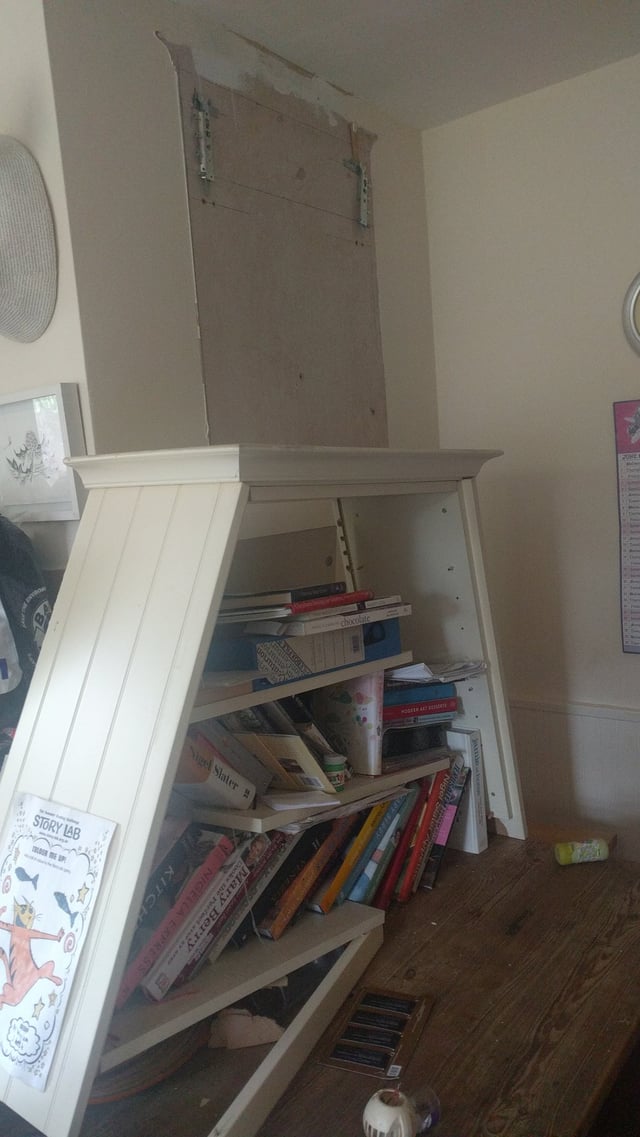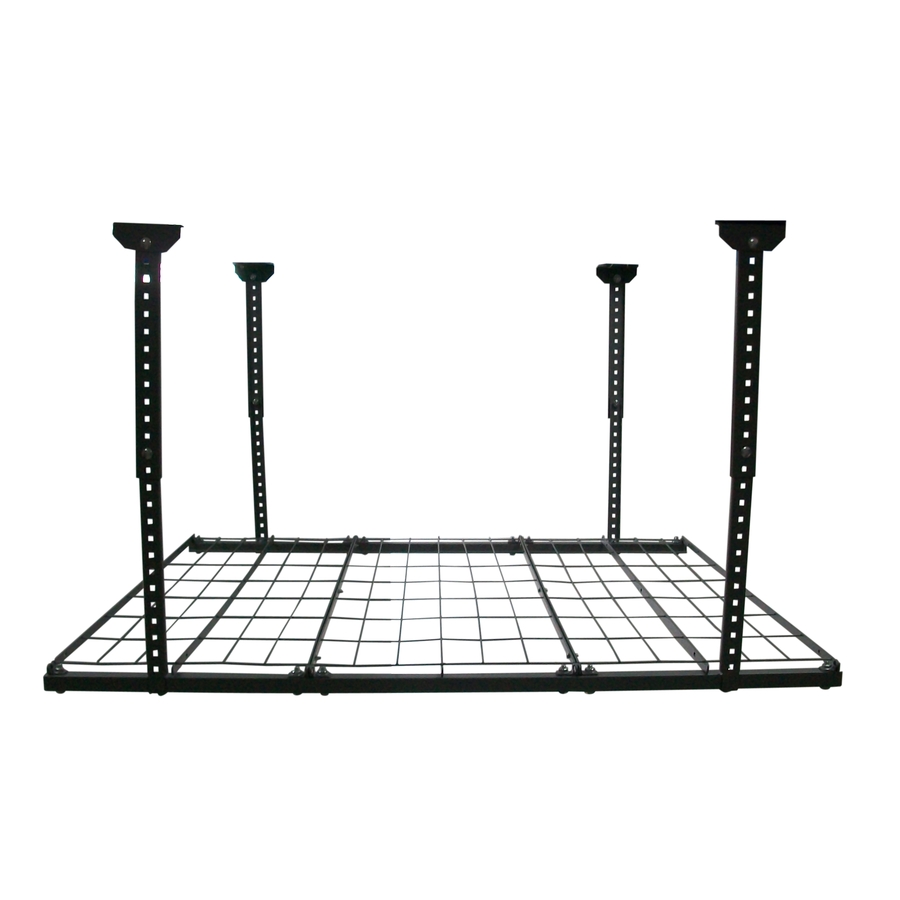I am hoping this isn't too wide of a topic since garage storage can vary greatly from person to person depending on what's being stored. In my case, I will be storing power tools like my circular saw, reciprocating saw, heavy toolbox full of misc hand tools, boxes of screws, paint cans, cases of water, 50-lb bags of kitty litter, etc.
Update 12/21/2012
After much consideration, I decided against the wall-mounted 16x18 shelf brackets that I had already hung per Amanda's suggestion and went with free-standing shelves as recommended by alx9r. He provided a logical argument against supporting large amounts of weight on a residential wall frame and it honestly made sense. Plus, the cross bar on those brackets just takes away from your available storage space. I will say, though, that these Everbilt brackets were super sturdy when fastened with heavy duty #10 screws. I could jump up and down on those shelves and they'd stay put. Here's a pic of the shelves I installed using the brackets:

And here are the adjustable shelves by Sandusky that I bought from Sam's Club:

The only think I don't like about these is that the shelves need more support. Being that they're 6' wide, they bow pretty badly if you set a heavy load right in the center. However, I am sure that there's a way to reinforce them, but I will worry about that later down the road. For now, each shelf supports 600 lbs, more than adequate for my needs. The vertical rods also support caster wheels, although I will need heavy duty threaded stem casters not available at any of the big box stores around here for a reasonable price.
Anyway, I hope this update helped.
Edit 12/3/2012
I bought a bunch of the brackets suggested in Amanda's answer and have since installed one shelf. It is very sturdy. The downside to these brackets, though, is how the diagonal support bar takes up a large amount of space. If you've mounted the brackets every 16", this keeps you from storing large objects wider/longer than 16" on the shelf below. The solution to that is to skip every other stud and mount the brackets every 32", but then you have the issue of sagging. Originally, I bought 18"x96"x0.75" lengths of MDF, but this will not work for 36" support spacing, so I will need to get stronger wood like plywood. However, there will still be some sagging involved at 32", so it appears that BrianK's suggestion to put a 1x2 along the edge will give it more support. Is there a technical term for such a strip? The term "shelf edging strip" seems to come up in Google searches, but I don't see a lot of products designed for this. I'd like to see some sort of c-shaped metal strip on the market that fits snug along the edge of a board rather than having to glue/screw a 1x2 onto the edge of the shelf.
The other option is to use use vertical shelf tracks and then mount adjustable shelf brackets onto them. This would allow 16" bracket spacing with no cumbersome support bar to get in the way. The problem is that I cannot find any heavy duty, adjustable brackets that work with plywood that support in the neighborhood of 300 lbs per bracket.
So, in summary, what I like about Amanda's brackets are their 650-lb weight capacity and ability to support a 16"-deep shelf. The downside is that support bar. The adjustable shelves, on the other hand, don't have such a support bar. Unfortunately, they can only hold around 100 lbs per bracket. Is there a way to get the best of both worlds here or am I going to have to build shelving from scratch? I definitely do not want to do that.






